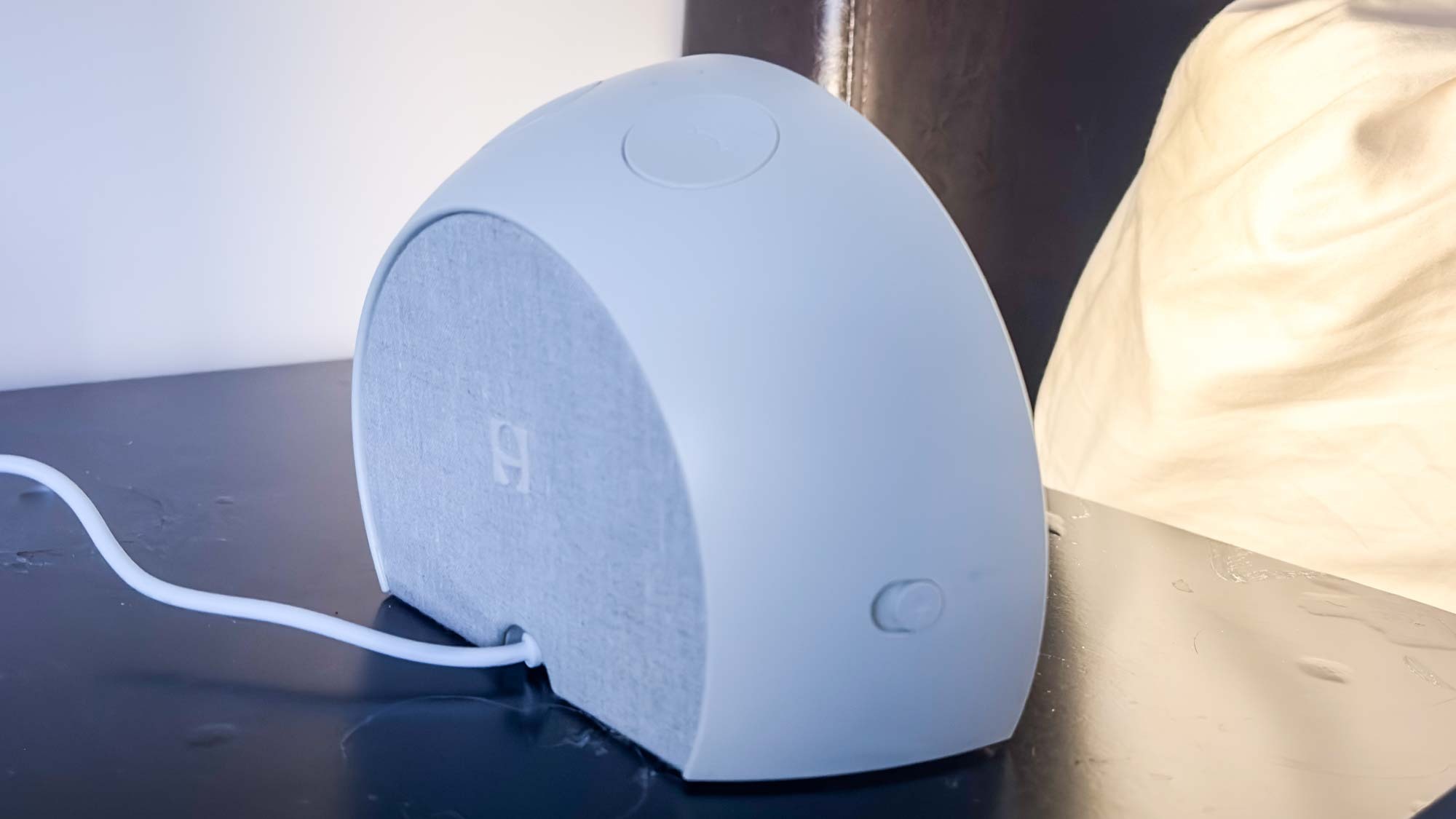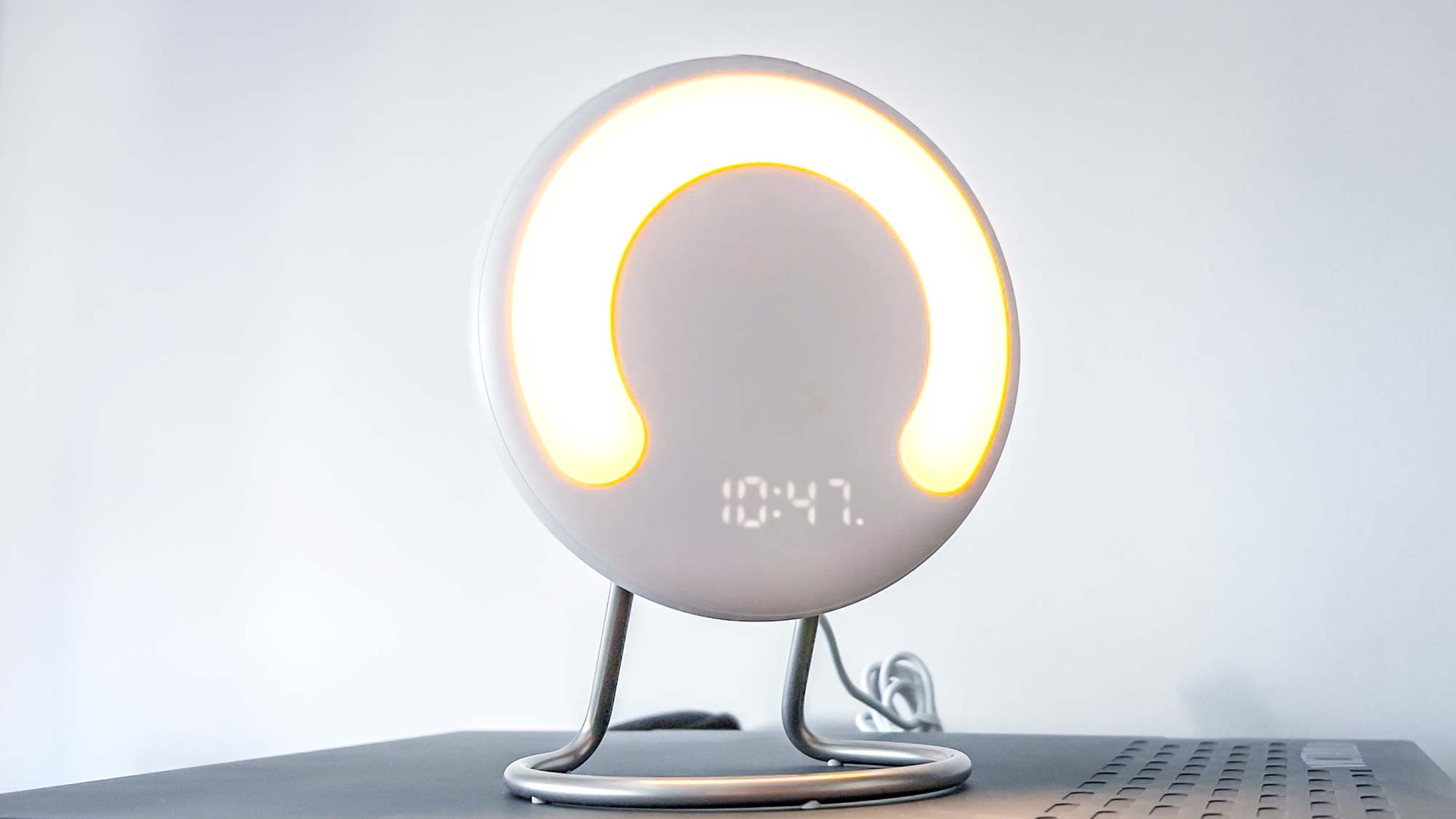I tried using this sunrise alarm clock for one month — here’s what it did for my sleep
I first used a sunrise alarm clock when the Amazon Halo Rise debuted late last year. While I experienced mild benefits of waking up gradually to simulated light, there are two reasons it wasn’t the right product for me: I don’t need a contactless sleep tracker and I don’t like having anything that looks too “techy” on my nightstand.
Then the Hatch Restore 2 ($199) (opens in new tab) launched. I knew the original Hatch Restore as a viral TikTok product you could purchase on Amazon (opens in new tab). But like the Halo Rise, the device’s plastic design didn’t match my meticulous bedroom aesthetic. The second-generation version fixed my complaint with a new minimalistic, fabric-swathed exterior that looks like it came out of a high-end home decor catalog.
Beneath the fabric, which is color-matched to a soft-matte shell, the Hatch Restore 2 features a multi-purpose light. More simply, it replaces a desk lamp you might use as a reading light. But if you use the companion Hatch Sleep app to set an alarm, the light will gradually increase in brightness to reproduce a sunrise. A selection of soft music can play when the light is at its brightest, signaling that it’s time to wake up.

Now, living in New York most of my life, I tend to suffer from mild bouts of seasonal affective disorder in the winter months. I mean, is there anything worse than waking up when it’s cold and dark outside? Despite trying a few ways to make it easier to get out of bed when it’s still dark out, and even swapping to nicer pillows last year, I still woke up exhausted with a nagging sense of dread and strong inclination to hit the snooze button.
Research from BMC Psychiatry (opens in new tab) found that a simulated dawn can “help with resetting the inaccurate organization of body clock functions relative to sleep occurring in winter,” to some extent. The idea is that waking up with a sunrise can support healthy circadian rhythms, resulting in feeling more rested in the morning and getting a better night’s sleep at any age.
I began waking up with a little less anxiety and a bit more energy, one day at a time.
Compared to the months before testing the Restore 2, I began waking up with a little less anxiety and a bit more energy, one day at a time. Honestly, I didn’t recognize these changes in the first week or two — it took using the sunrise alarm for nearly a full month to really I felt different in the mornings. I think this is the longest I’ve gone without snoozing my alarm on my iPhone or Apple Watch, which I’ve ultimately disabled now that I trust Hatch to wake me up on time.
The Restore 2 has helped me with getting to bed, too, without needing to try something like the military sleep method. I’m a “can’t fall asleep with ambient noise” kind of person, so I’ve made use of the device’s range of restful soundtracks. I’m particularly fond of the rain simulation, which is something I previously needed verbally to ask Alexa to run from my Echo Dot with Clock (2022). Now, I just need to press a button on top of the Restore 2 for sound when I’m ready to fall asleep.
There are some additional relaxation features available to Hatch Sleep members ($4.99/month,) but as a non-member, I don’t feel like I’m missing out on anything. For comparison, making the most of Halo Rise’s sleep-tracking features requires a Halo subscription ($3.99/month.) There are other fitness tracker tools enabled with a Halo membership, but contactless sleep-tracking is not one I need. I sleep wearing my Apple Watch Series 8 and Oura Ring Gen 3, after all.

Just because the season is changing doesn’t mean I’ll stop relying on Hatch Restore 2. In fact, it’s become an essential part of my sleep routine . The fact that it looks great on my nightstand — did I mention the disappearing clock feature? — is a huge perk. I’d like to think it contributes to my bedroom’s Feng Shui for better sleep, without needing to move my bed (and heavy mattress) around.
That said, at $199, the Hatch Restore 2 is more expensive than the original Hatch Restore and Halo Rise, which both cost $129 (though you can often find the Halo Rise on sale thanks to Amazon deals.) If the design doesn’t matter as much to you, the first-gen Restore serves the same purpose as the newer one. And if you’re interested in sleep-tracking data, the Rise might be your speed.
More from Tom’s Guide
For all the latest Technology News Click Here
For the latest news and updates, follow us on Google News.
